You can still watch racing at the ‘Flemington of the Bush’ from the 1886 grandstand, which has graced Terang racecourse for well over 100 years now
My experience at the races
If I was on the committee of Terang Turf Club, I’d make a lot more of its vintage grandstand, built some time in the late 1800s. It doesn’t have the glamour or style of the grandstands at courses like Camperdown or Bendigo, but its simplicity is almost its biggest attraction.

At one point during the afternoon meeting in April 2021, I stopped a gentleman who – if I remember correctly – wore a badge declaring him to be Vice-President. He was friendly enough and certainly welcoming of someone like myself travelling from afar for a day at the races, my first since the start of the COVID19 restrictions over a year ago.
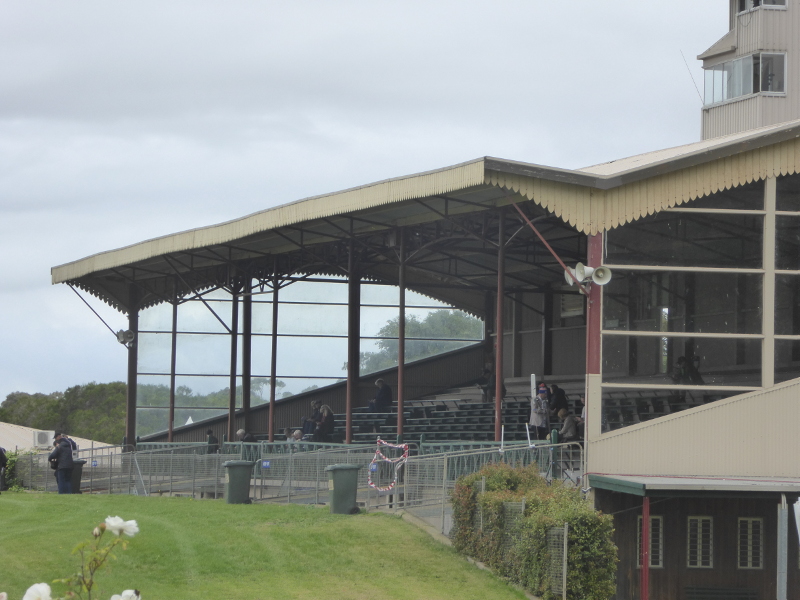
But he was a little vague on the exact year of construction, estimating around 1896 or 1898. Looking at my notes on the history of Terang Racecourse, when I got back home that evening, I actually believe this might be the structure that was built in time for the New Year’s Day race meeting on 1886. That would make it the oldest existing grandstand I have seen on this tour of racecourses in Victoria.

Reports of the 1886 grandstand opening at Terang spoke of three staircases into the seating area (there are still three today); and of ten rows of seats.
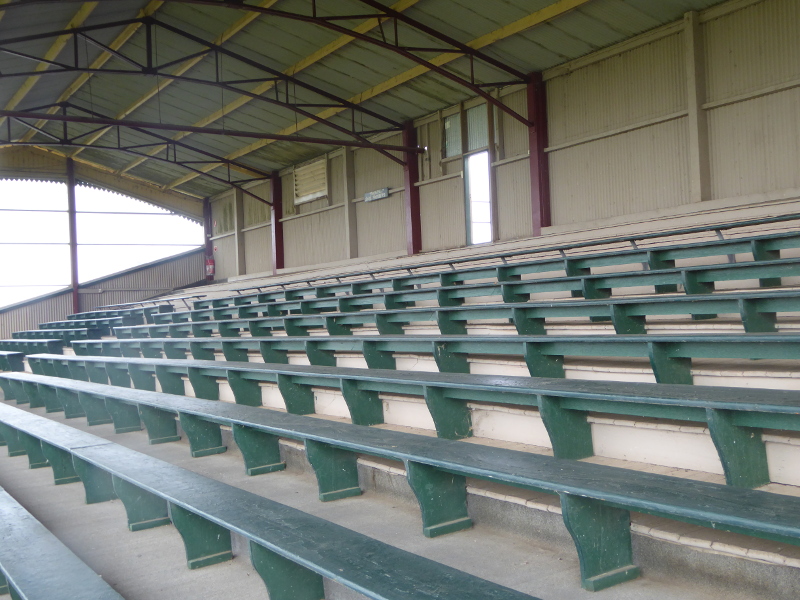
So, are the benches in place still today the originals? There are 8 or 9 rows now rather than 10, but there is space at the back of the grandstand which would easily allow for another row or two. And certainly the height of the benches made it hard for a tall lad like myself to sit comfortably: people were a whole lot shorter in the 19th century than they are today…
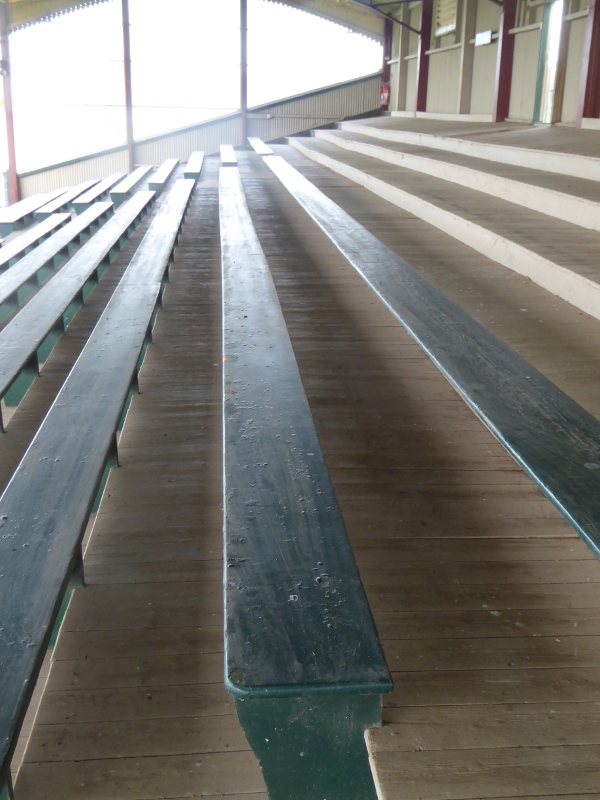
The grandstand still affords ‘admirable views’ of the whole track, just as those early reports said 135 years ago.

The painted timber panels dipping down from the grandstand roof are about the only decorative addition to Terang racecourse grandstand.
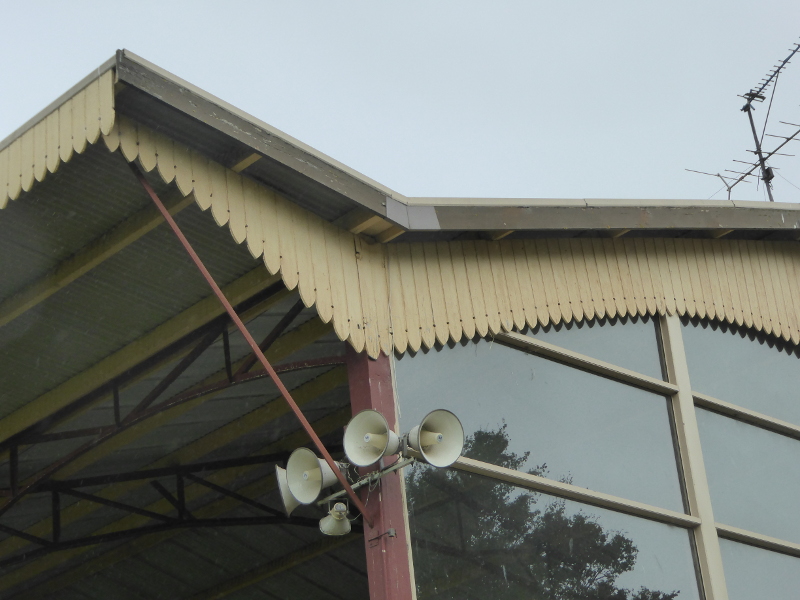
But I liked it for its simplicity and priority on function rather than ostentation.
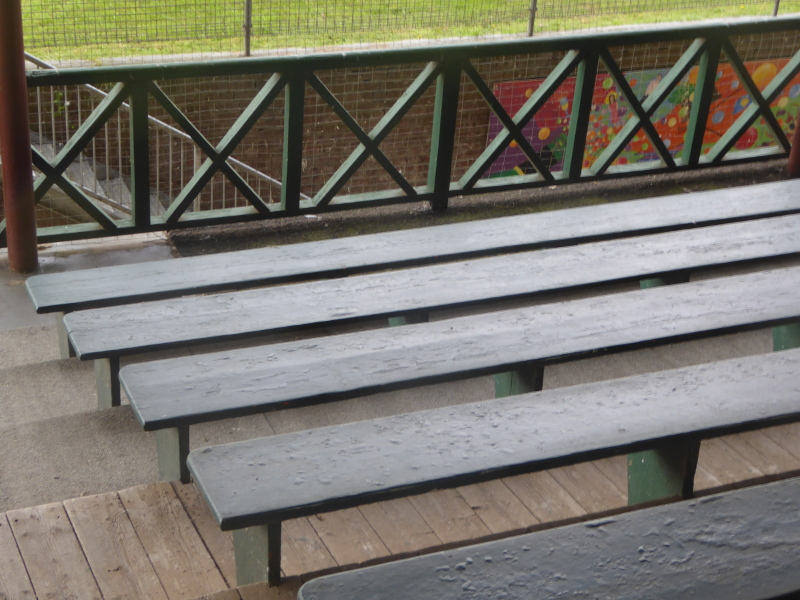
I got to the course early, about an hour ahead of the first race, and found the grandstand completely empty. I actually liked the neat lines of those unoccupied benches and could easily imagine them packed with spectators on a busy Cup day over the decades.

By the time racing started, there was a decent crowd, though just as many chose to stand on the elevated grass area in front of the grandstand rather than bend down low to take a vintage bench.
And it was easy to maintain social distancing, with half the grandstand still empty during the first few races.
Mind you, with my long drive home, I left well before the big race of the day, and people were still queuing to get in as I slipped my way out to get home before dark.
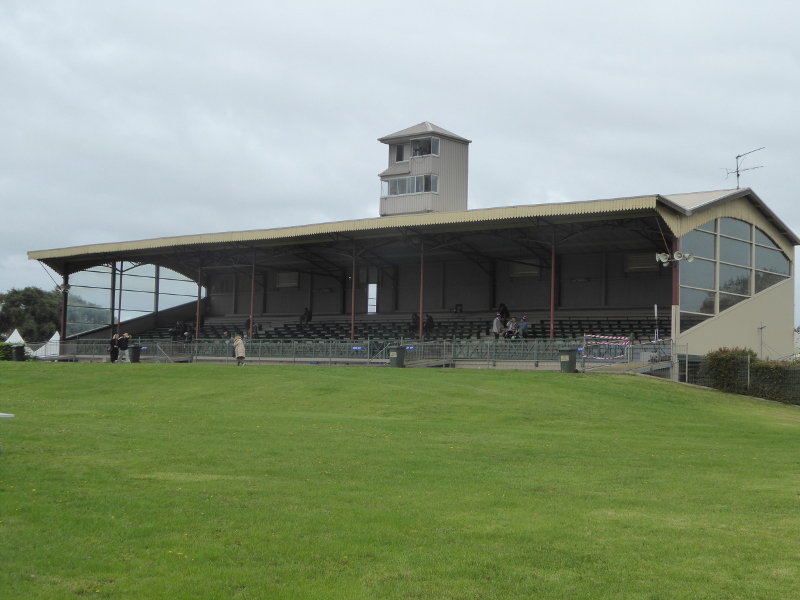
I guess without the usual bands playing, kids’ playgrounds or Fashion in the Fields – all restricted still under COVID safe rules – there is less reason to make a day out of the race meeting. But it does strike me as odd – or maybe just different over here in Australia – to have the big race on as the last event. On most UK race programmes, the big race would come in the middle, but I guess people might just head home early over here. The trouble is, in the case of Terang that day I was there, they just turn up late instead if their main attraction is the big one.
It meant I didn’t get to see the top horses at Terang. But it was just a pleasure to get to the races at all, and it’s always a delight to watch the horses parading, and see how the handlers care for them, not to mention the joy of the lucky owners in smaller events, just happy to be in the winners enclosure and to get interviewed after the event.
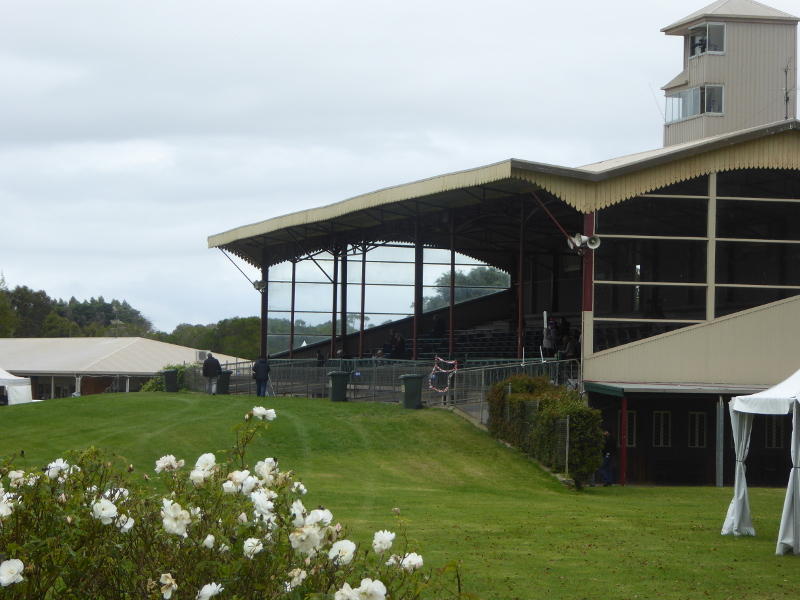
No locusts or grass fires around for this meeting, the course actually looked a beautiful green both on the track and on the spectator areas. The going was soft, and I overheard one jockey walking the course at one point to find the best ground – I actually backed his horse just because he did his homework ahead of the race, and his mount romped home, so sometimes it’s worth keeping an eye open for those kind of hints on the day.
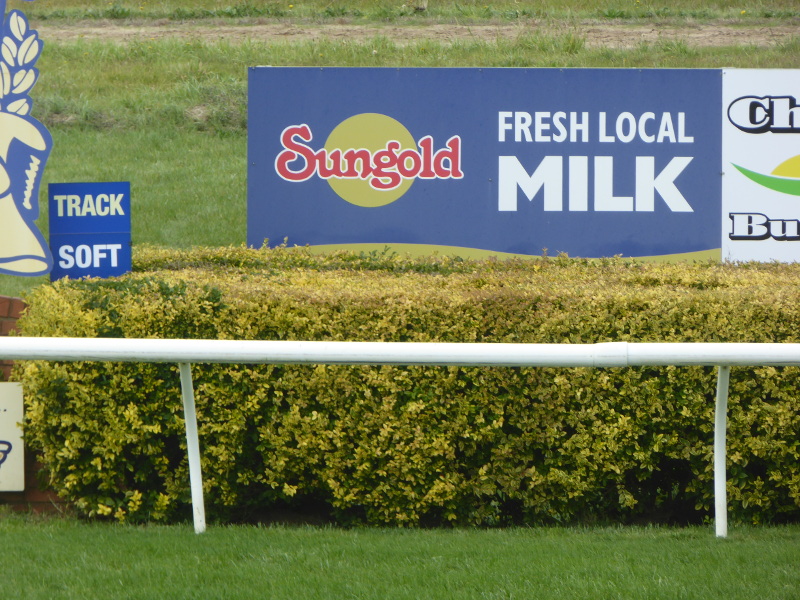
There is a hint of a privet hedge now along one of the rails (see story below from the early days of the course); there are rose beds, though April isn’t the best month for joyous blooms. And I rather liked the copse of deciduous trees that just might have been linden trees just by the entrance gate.
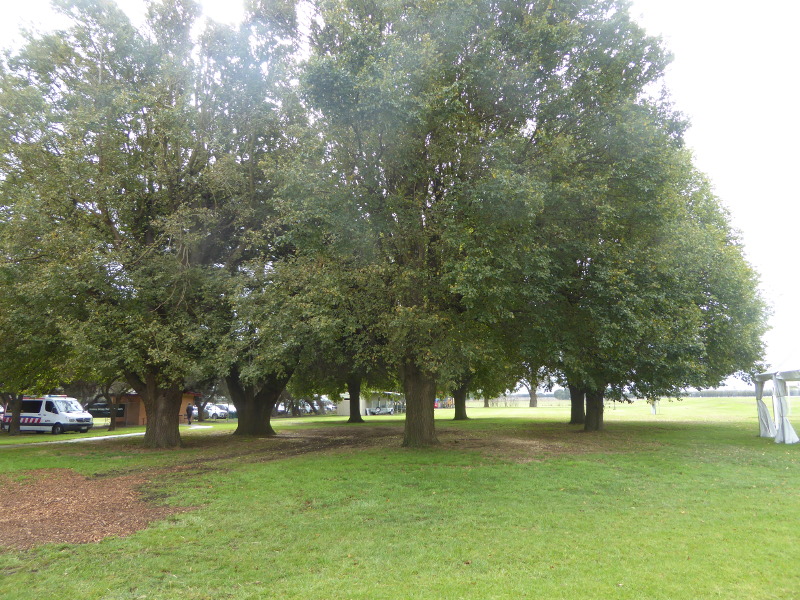
The only other potentially vintage part of Terang racecourse was one of the pavilions where a private party was being hosted.
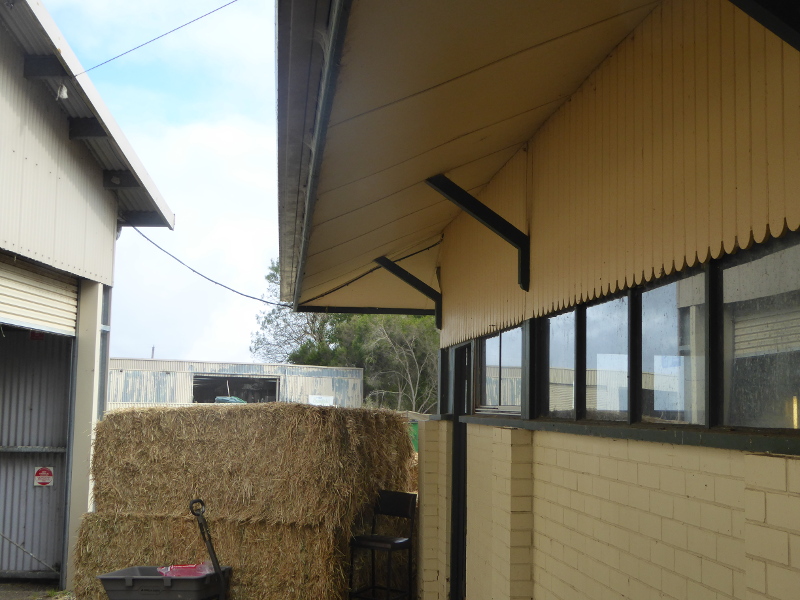
And I had to google search Grey Sapphire, the horse whose name lives on in the lounge bar under the grandstand, and whose photos fill some of the wall space in that lounge.
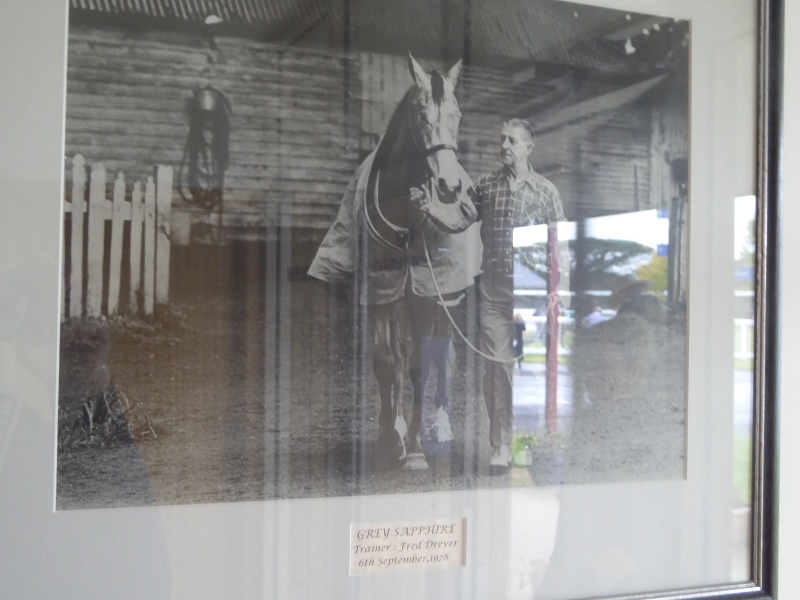
Turns out this horse, active in the late 70s, was trained locally in Terang, though the photos show it winning races at some of the big metropolitan courses in Melbourne. Shame they didn’t have a photo of it winning some minor event at Terang early in its career…And I guess everyone locally knows the trainer, David Drever, whose stables were nearby.
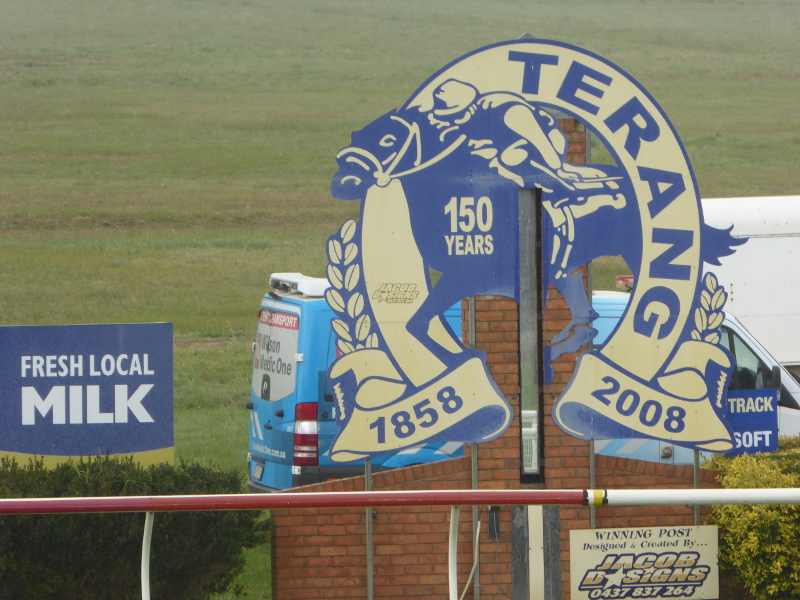
The winning post at Terang mentions racing in the area as early as 1858, though it was not always held on this site. The VP chap made the point that today’s course is the third site for Terang Races since the first races here.
I’ve come to like Terang while on this tour for Vintage Victoria. The Johnstone Court arcade, built in the 1920s is a delightful structure in the town centre, the avenue of elms down the main street is a thing of beauty. And now the racecourse grandstand. I’m glad Terang now has two entries on the Vintage Victoria site.
Practicalities
Course is a couple of kms from the town. Well sign-posted, it is on the western side of town.
$20 entrance on Terang Cup day.
History and stories from Terang racecourse
Racing at Terang began earlier – according to the winning post board, 1858 – but the first article I noticed on Trove was from 1883, when the weather at Terang Races was showery and the correspondent complained that the ‘want of a grandstand at Terang Racecourse was greatly felt.’
In 1884, though, a lengthy report on the New Year’s meeting in the Camperdown Chronicle noted that “proper accommodation in the way of a grand stand appeared to be the one great defect of the day,” so there was no grandstand yet at that point either. And although some money was invested in the course that year, the 1885 report in the same newspaper still spoke of spectators on the town side of the course only seeing half the race as their view was blocked by people on the other side. “The grand stand is an urgent necessity,” the article said. I did enjoy the reporter’s description of the horse-drawn vehicles which headed to the course that afternoon, though. Two, three and four-horse carriages were on the roads, with the wealthier racegoers, and rickety old drays brought the less well-off, though many just turned up on their bikes, or walked.
A new grandstand was built in time for the 1886 New Year’s meeting. It had ten rows of seats, three staircases up to the back and ‘admirable’ views of the races, which could now be seen from start to finish. There was also a ladies’ ‘retiring room’, and the overall improvements that year led the Camperdown Chronicle to conclude: “There are few country racecourses that have the same conveniences as those to be found at Terang.”
The 1889 New Year meeting was slightly hampered by a swarm of locusts which passed through the area.
But other than that, no major incidents seemed to befall this racecourse in those early years.
A 1915 correspondent who had made a trip down from NSW suggested that the course could do with a few flowers to brighten it up a little, and a privet hedge to replace the white picket fence against which he had apparently leant and ended up covered in white marks on his clothes. But that seemed to be the extent of his complaints.
In 1923 the club committee brought in the same firm of architects who had made improvements at Flemington racecourse to make changes at Terang. A newspaper article at the following New Year’s Day meeting looked back 30 years to when – it said – the grandstand was just a barn, and the course had few facilities and no running rail at all, though it looks from my research as if they should instead have gone back 40 years…
By the 1930s I was struck by the addition of the local carnival held on Terang Racecourse. It sounded much like many other country shows, with prizes for best sheep dog, best Irish reel, best turned out Scotsman. The Humorous Dog competition caught my eye, though, with prizes for Fattest Dog, Prettiest Dog, Biggest Dog, and…Dog Most like its Master, which was worryingly won by a Miss R. Law-Smith – I hope she was pleased and I do wonder what breed of dog it was…
More seriously, later the same summer, in February 1933, a grass fire started at Terang Racecourse, which narrowly missed the grandstand and other racecourse buildings. For a while it headed towards town but a change in wind direction saved the day and only a stretch of fencing was burnt. The cows grazing on the course had to move, though!
Terang races seemed for years to be free of scurrilous dealings which got reported from other courses on this Vintage Victoria journey so far. But finally in January 1936, Trove came up with an interesting case. At the last race on New Year’s Day, there was a rush of bets placed for L1, paid for apparently by L10 notes, therefore getting L9 change for each bet. But on close inspection, all these notes turned out to be New Zealand 10 shilling notes, which apparently looked a lot like Australian 10 pound notes. The article I found doesn’t tell whether the culprits were ever caught.
Tragedy struck the course in March 1939, when a jockey fell from his mount in a jump race, and died a few days later in hospital. George McMahon was just 31 and was a popular figure in horse racing at the time, with a large crowd attending his funeral in Warrnambool. I didn’t see any memorial for him, sadly – or did I miss something?
Terang Racecourse once had its own railway station or platform. But does anyone know the years it was there? When it opened and when it closed? Has anybody still alive ever got off the train at Terang Racecourse for a day at the race?
What are your experiences and stories from a day at Terang Races?
Anybody got nice memories of days out at Terang races?
Has the grandstand changed; are those benches the original ones from over 100 years ago?
Has anybody still alive ever got off the train at Terang Racecourse for a day at the race?
Any other stories from your own days out at Terang Races, just leave them in the box below and we can add them to the post.
Other links and writings on Terang racecourse
I didn’t find any other blog post about Terang Racecourse, and very little I could find written about the place. Just this Sydney Morning Herald article from a few years ago, highlighting the whole town of Terang.


Spending time with family, great uncle fred drever, and cousins.
With 3 other blokes I had shares in 2 horses that were being trained by Freddie Drever in early 70’s and one of them was racing on New Year’s Day 1971 (I think)
It was a very hot day and we drifted between the grandstand and under the trees where the bookies were, so hot in fact my girlfriend fainted in the bookies ring and I had to get her some ice and water
Horse ran 4th but won next start then bled and went to breeding as she was a Good Brandy descendant
Saw the pics of the grandstand and it brought back some great memories not least of all Freddie who was an amazing character, told us stories about Jim Pike riding some of his horses, enthralling!
Cheers
James
Great stories, thanks for sharing, James